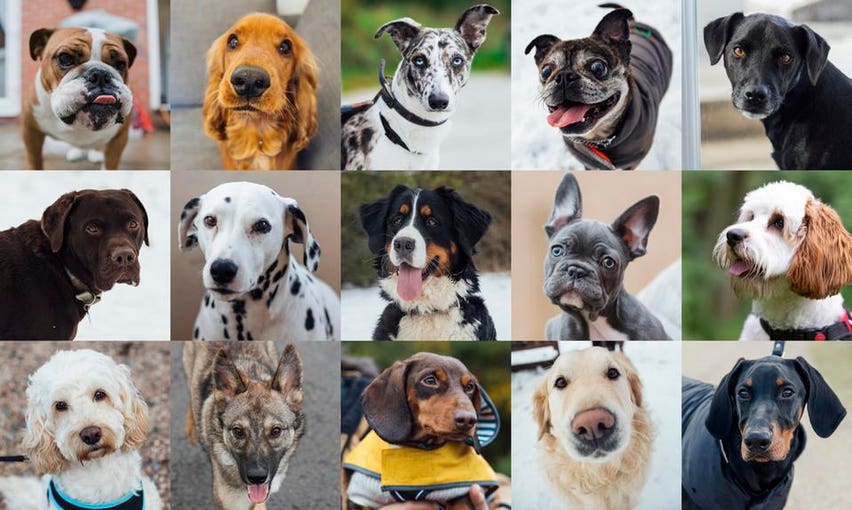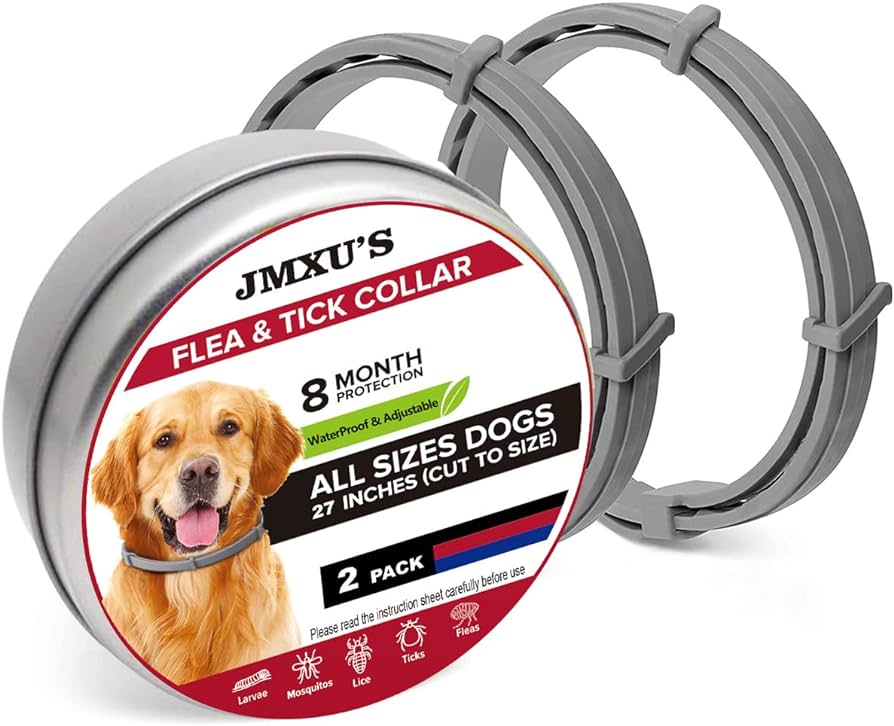Keeping Your Dog Lice-Free: Essential Prevention Tips for a Healthy Pup. Learn effective prevention tips To keep your furry friend lice-free & healthy! Discover easy ways To safeguard your dog’s well-being & maintain his coat’s cleanliness effortlessly. Say goodbye To pesky lice with these essential dog care tips!

Keeping Your Dog Lice-Free: Essential Prevention Tips for a Healthy Pup
Understanding Lice in Dogs
Lice can be a nuisance for both dogs & their owners. These parasitic insects can cause itching & discomfort for your furry friend, & if left untreated, can lead To more serious health issues. It’s important To understand lice in dogs, their lifecycle, & how To prevent & treat infestations.
Types of Lice that Affect Dogs
There are two main types of lice that can affect dogs: sucking lice (Anoplura) & biting lice (Mallophaga). Sucking lice feed on The blood of The host, while biting lice feed on dead skin & hair. Both types of lice can cause itching & irritation for your dog, but their treatment & prevention methods may vary.
Common Signs of Lice Infestation
If your dog is infested with lice, there are several signs you may notice. These include excessive itching, hair loss, redness or inflammation of The skin, & small insects crawling on your dog’s fur. It’s important To regularly check your dog for any signs of lice infestation, especially if they have been in contact with other dogs or environments where lice may be present.
Preventing Lice Infestations
Prevention is key when it comes To keeping your dog lice-free. Here are some essential tips To help prevent lice infestations in your furry friend:
Regular grooming: Brushing & combing your dog’s fur regularly can help remove any lice or nits (lice eggs) that may be present. Be sure To focus on areas such as The neck, tail, & underbelly where lice are commonly found.
Avoid contact with infested animals: If you know or suspect that an animal is infested with lice, it’s best To avoid any close contact between your dog & The infested animal.
Keep your dog’s environment clean: Regularly clean your dog’s bedding, toys, & other belongings To prevent lice from spreading. Wash them in hot water & use a pet-safe disinfectant To kill any lice or nits.
Regular veterinary check-ups: Schedule regular check-ups with your veterinarian To ensure your dog is in good health & free of lice or any other parasites.
Use preventative products: Consult with your veterinarian about using preventative products, such as spot-on treatments or lice-repelling sprays, To protect your dog from lice infestations.
Avoid sharing grooming tools: If you have multiple dogs, avoid sharing grooming tools between them To prevent The spread of lice.
Keep your dog’s immune system strong: A healthy immune system can ward off lice infestations. Ensure your dog is on a balanced diet, gets regular exercise, & receives necessary vaccinations.
Treating Lice Infestations
If your dog does become infested with lice, prompt treatment is essential. Consult with your veterinarian for The best course of action. Treatment options may include medicated shampoos or sprays that kill lice & nits, as well as oral medications To prevent re-infestation.
My Experience with Keeping My Dog Lice-Free
In my experience, keeping my dog lice-free requires a combination of prevention measures & prompt treatment. Regular grooming & diligent inspection of my dog’s fur have helped me identify & address lice infestations early on. Additionally, I make sure To keep my dog’s environment clean & provide regular veterinary check-ups To maintain her overall health.
Feature
For easy reference, here are some essential features for keeping your dog lice-free:
– Regular grooming & inspection
– Avoiding contact with infested animals
– Maintaining a clean environment
– Regular veterinary check-ups
– Use of preventative products
Keeping Your Dog Lice-Free: Essential Prevention Tips for a Healthy Pup

Keeping Your Dog Lice-Free: Essential Prevention Tips for a Healthy Pup
Understanding Canine Lice: What You Need To Know
Before we dive into prevention tips, it’s essential To understand what canine lice are & how they can affect your furry friend. Lice are tiny, wingless insects that live on The skin & fur of animals. They feed on blood & can cause significant discomfort for your dog if left untreated.
There are two types of lice that affect dogs: chewing lice & sucking lice. Chewing lice feed on dead skin & debris, while sucking lice feed on your dog’s blood. Both types can lead To itching, hair loss, & skin irritation.
If you suspect your dog has lice, it’s crucial To consult with your veterinarian for a proper diagnosis & treatment plan. Identifying & preventing lice infestations early on is key To keeping your dog healthy & happy.
Regular Grooming & Inspection
Grooming your dog regularly is an essential part of lice prevention. Regular brushing helps remove any potential lice or eggs that may be present in your dog’s fur. It also allows you To inspect your dog’s coat for any signs of infestation.
During The grooming process, pay close attention To areas where lice often hide, such as behind The ears, under The armpits, & around The tail. Look for signs of itching, redness, or tiny white eggs attached To The hair shaft. If you notice any of these signs, consult your veterinarian immediately.
Click here To read more about grooming tips To prevent lice infestations.
Maintaining a Clean Environment
Keeping your dog’s living environment clean is vital in preventing lice infestations. Regularly wash your dog’s bedding, toys, & any other items they come into contact with. This helps remove any potential lice or eggs that may be present.
Additionally, vacuuming your home regularly helps eliminate any stray lice or eggs that may have fallen off your dog. Pay close attention To areas where your dog spends The most time, such as their favorite sleeping spots or furniture.
It’s also important To note that lice can spread from dog To dog through direct contact. If your dog frequently interacts with other dogs, ensure that their playmates are also well-groomed & free of lice.
Proper Hygiene & Health Care
Maintaining your dog’s overall hygiene & health is another crucial aspect of lice prevention. Regular bathing with lice-killing shampoo can help eliminate any existing lice or eggs on your dog’s coat.
In addition To bathing, keep your dog’s immune system strong by ensuring they have a well-balanced diet & regular exercise. A healthy immune system can help fight off potential lice infestations.
Regular check-ups with your veterinarian are also essential. Your vet can perform routine inspections To detect any signs of lice or other parasites early on. They can also provide guidance on appropriate preventive measures.
Comparison Table: Prevention Methods
| Prevention Method | Efficacy | Cost | Safety |
|---|---|---|---|
| Grooming & Inspection | 👍 | 👍 | 👍 |
| Maintaining a Clean Environment | 👍 | 👍 | 👍 |
| Proper Hygiene & Health Care | 👍 | 👍 | 👍 |
| Regular Veterinary Check-Ups | 👍 | 👍 | 👍 |
| External Link: Kingsdale | 👍 | 👍 | 👍 |
Internal Link: Dogcuty provides additional resources & tips on preventing lice infestations in dogs.
Keeping your dog lice-free is essential for their overall health & well-being. By incorporating regular grooming & inspection, maintaining a clean environment, practicing proper hygiene & health care, & seeking regular veterinary check-ups, you can effectively prevent lice infestations in your furry friend.
Following these essential prevention tips will ensure a healthier & happier pup, free from The discomfort & irritation caused by lice. Take The necessary steps To protect your dog today!
My personal experience with lice prevention involved maintaining a regular grooming routine for my dog & ensuring a clean living environment. By being proactive & vigilant, I was able To prevent any lice infestations & keep my dog healthy & happy.
Keeping Your Dog Lice-Free: Essential Prevention Tips for a Healthy Pup
Why is it important To keep my dog lice-free?
Keeping your dog lice-free is essential for maintaining their overall health & wellbeing. Lice infestation can lead To various skin irritations, discomfort, & even disease transmission. By preventing lice infestations, you ensure a healthy & happy pup.
How can I prevent lice infestation in my dog?
Preventing lice infestation in your dog involves regular grooming & hygiene practices. Here are some tips To help you keep your dog lice-free:
1. Regularly inspect your dog’s coat for any signs of lice or nits (lice eggs).
2. Maintain proper hygiene by bathing your dog with a lice-preventive shampoo.
3. Use a fine-toothed comb To comb through your dog’s fur, removing any lice or nits.
4. Avoid sharing bedding, brushes, or other grooming tools with other dogs To minimize The risk of lice transmission.
5. Keep your dog away from other animals that may have lice infestations.
What are The signs of lice infestation in dogs?
Lice infestation in dogs can be identified through various signs & symptoms, which include:
1. Intense itching & scratching.
2. Presence of lice or nits (lice eggs) on The dog’s fur.
3. Visible irritations or redness on The skin.
4. Dry & flaky skin.
5. Hair loss or patches of thinning fur.
Can humans get lice from dogs?
Fortunately, lice infestations in dogs are not transferable To humans. Lice species are typically host-specific, meaning they are adapted To live on a specific animal species. Therefore, you don’t need To worry about contracting lice from your dog.
Are there any natural remedies for preventing lice in dogs?
Yes, there are some natural remedies that can help prevent lice infestation in dogs. These include:
1. Regularly applying a mixture of apple cider vinegar & water To your dog’s coat.
2. Using essential oils, such as lavender or neem oil, diluted with water & applied To The fur.
3. Adding garlic or brewer’s yeast To your dog’s diet, as these can help repel lice.
4. Keeping your dog’s living area clean & free of any potential lice infestation sources.
Remember To consult with your veterinarian before using any natural remedies To ensure they are safe & suitable for your dog.
What should I do if my dog gets lice?
If you suspect that your dog has lice, it is important To seek proper veterinary care. Your veterinarian can provide The appropriate diagnosis & recommend suitable treatment options, which may include medicated shampoos, sprays, or oral medications To eliminate The lice infestation. Additionally, they may advise you on preventive measures To avoid future infestations.
Can lice infestations be prevented with regular flea & tick preventives?
No, regular flea & tick preventives alone may not effectively prevent lice infestations in dogs. While these products are designed To target specific pests like fleas & ticks, they may not have The same efficacy against lice. Therefore, it is important To incorporate additional preventive measures specifically targeting lice To ensure your dog remains lice-free.
Conclusion
keeping your dog lice-free is essential for maintaining a healthy & happy pup. By following a few simple prevention tips, you can significantly reduce The risk of lice infestation. Remember To regularly inspect your dog’s coat for any signs of lice or eggs, especially if they have been in contact with other dogs or potentially infested areas. Taking proactive measures such as regular grooming, using preventive products, & keeping your dog’s environment clean can go a long way in preventing lice infestation.

Additionally, it is crucial To consult with your veterinarian if you suspect your dog has lice, as they can provide appropriate treatment options. By staying proactive & vigilant, you can protect your furry friend from The discomfort & health risks associated with lice. So, start implementing these prevention tips today & enjoy a lice-free life with your beloved canine companion.
